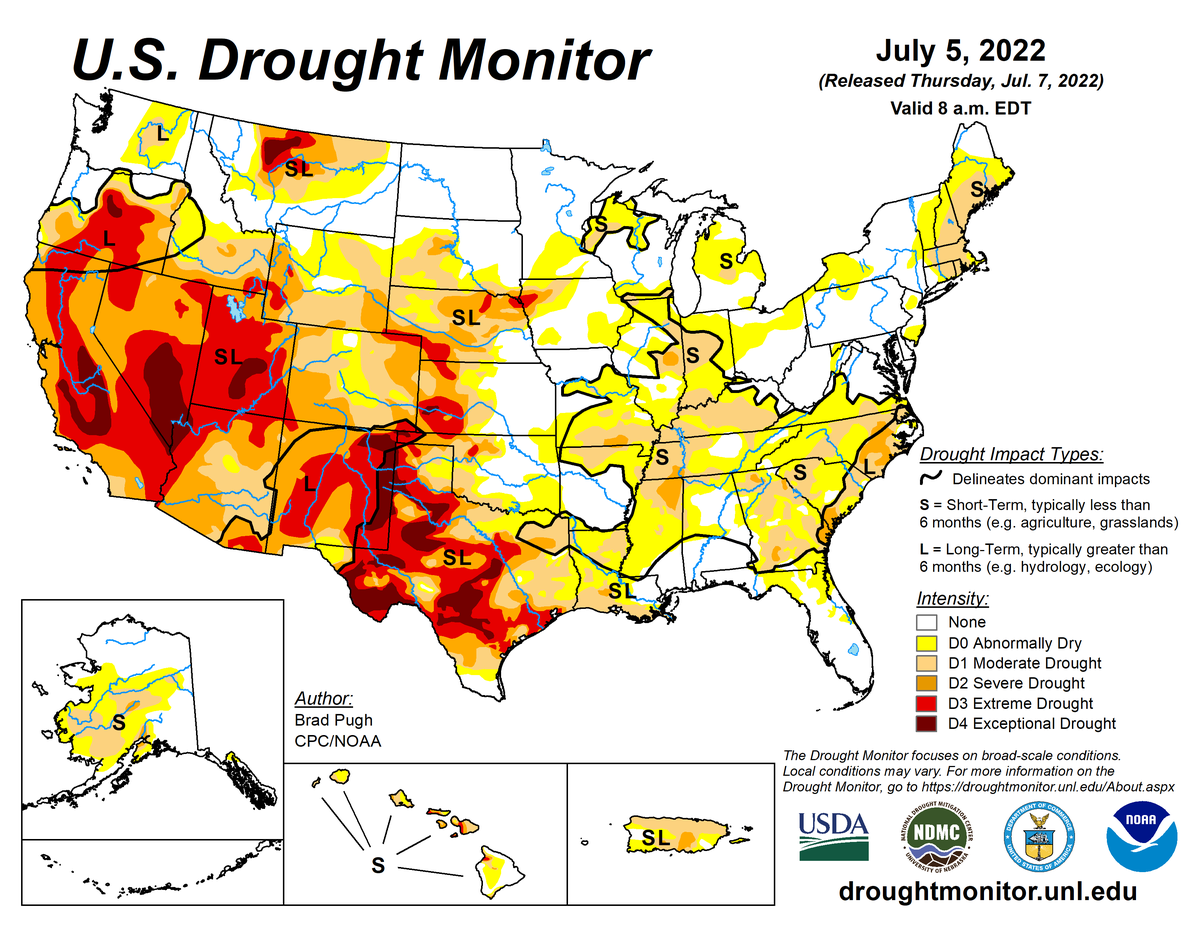
According to the July 5, 2022, U.S. Drought Monitor, moderate to exceptional drought covers 44.3% of the United States including Puerto Rico, an increase from last week’s 42.5%. The worst drought categories (extreme to exceptional drought) stayed about the same at 14.7%.
A strong subtropical high pressure ridge continued across the southern half of the contiguous United States (CONUS) during this USDM week (June 29-July 5), with another broad upper-level ridge persisting over Alaska and western Canada. In between these ridges, upper-level troughs of low pressure moved through the jet stream flow across the northern states and southern Canada. The troughs dragged Pacific cold fronts along with them, and these fronts brought areas of above-normal precipitation to parts of the Pacific Northwest, northern Rockies, northern Plains, and Great Lakes. They also kept temperatures cooler than normal along the West Coast and in the Upper Midwest and Northeast. Showers and clouds associated with the Southwest Monsoon brought above-normal rainfall and cooler-than-normal temperatures to much of the Four Corners states. A leftover front early in the week and the short-lived Tropical Storm Colin were responsible for above-normal precipitation across the Gulf of Mexico Coast and Southeast states.
The rest of the CONUS was drier than normal, especially over the Great Basin and from the southern Plains to New England. Excessively hot temperatures persisted throughout the week across much of the Great Basin, Great Plains, Midwest, and Southeast beneath the subtropical ridge. The upper-level ridge over Alaska gave the 49th State a warmer- and drier-than-normal week. Drought and abnormal dryness contracted where it rained, especially along the Gulf Coast to coastal Carolinas, in the central Rockies to central Plains, and parts of the northern Rockies and northern Plains. Widespread expansion or intensification of drought and abnormal dryness continued from the southern Plains to Tennessee and Ohio Valleys, and in parts of the Appalachians, Great Lakes, and New England. Alaska saw continued expansion and intensification of drought, while eastern Puerto Rico experienced contraction from locally heavy rains this week. Nationally, expansion exceeded contraction with the nationwide moderate to exceptional drought area increasing this week.
Abnormal dryness and drought are currently affecting over 190 million people across the United States including Puerto Rico—about 61.3% of the population.

The full U.S. Drought Monitor weekly update is available from Drought.gov.
In addition to Drought.gov, you can find further information on the current drought as well as on this week’s Drought Monitor update at the National Drought Mitigation Center.
The most recent U.S. Drought Outlook is available from NOAA’s Climate Prediction Center and the U.S. Department of Agriculture provides information about the drought’s influence on crops and livestock.
For additional drought information, follow #DroughtMonitor on Facebook and Twitter.



